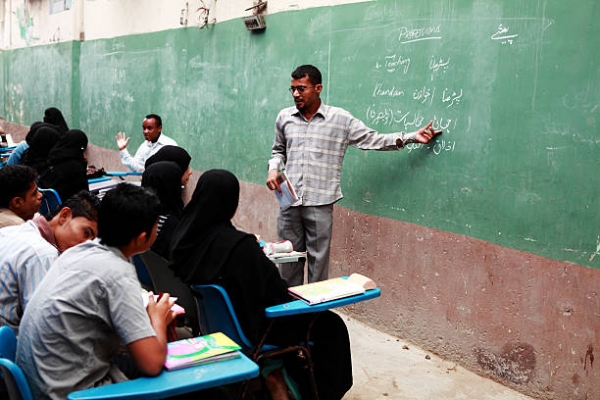Action on Armed Violence (AOAV) is a UK based non-profit, non-governmental organization (NGO) devoted to research and advocacy on armed violence worldwide. The organization reports on global armed violence and strives to minimize harm and rebuild lives affected by armed violence. Its research primarily concerns methods to eliminate armed violence, the consequences of explosive weapons at the point of impact, and the reverberating impacts of explosive violence. AOAV has promoted and contributed to international agreements related to disarmament. Verity Hubbard, a consultant researcher for AOAV, has produced this report with the objective of comprehensively examining the effects of explosive violence on schools – from the immediate impact of a blast to the long-term aftermath.
Schools are frequently attacked by non-state actors, as they are “visible symbols of state presence with teachers often acting as leaders in their community.” As decided by the United Nations Security Council (UNSC), attacking schools is one of the six grave violations against children in times of war. According to data collected by AOAV, there have been approximately 370 incidents of explosive weapons on schools and universities worldwide between 2011 and 2019. These occurrences are responsible for more than 5,541 civilian deaths, 27% of which were children. Although the perpetrator of the attacks is not always known, “58% of incidents of explosive violence on schools are conducted by non-state actors when the perpetrator status is known, and 42% of them were conducted by state actors.” Additional data extracted from AOAV’s explosive violence monitor showed that improvised explosive devices (IEDs) are the most commonly used explosive weapon for attacks on schools, with 111 of the 370 attacks on schools and education facilities between 2011-2019 involving IEDs. Since IEDs have a smaller, more specific range than other explosive weapons such as airstrikes and mortar attacks, it is indicated that these attacks were premeditated and intentional.
Syria, Pakistan, Iraq, and Afghanistan have been subject to the most incidents of explosive violence against schools in the past decade. Syria has experienced the most incidents, with 123 attacks, many of which were conducted by Russia and the international coalition against IS as a part of their aerial bombardment campaign. Explosive violence against schools disrupts children’s education and contributes to the number of out-of-school children. “20% of the world’s primary school age children live in conflict affected countries, but they account for around half of all out-of-school children.” These incidents instill fear in teachers and children, inflict lifelong psychological damage on children, destroy educational facilities, and “generate instability and distress the communities that schools serve.”
Even after a conflict has ended, the damage imposed on a state’s infrastructure by explosive violence can obstruct children’s access to education for years beyond. A child’s lack of education permanently alters their future prospects and “the effects can reverberate down generations.” Those who do not attend school are less likely to make contributions to society, and communities with a large population of uneducated individuals are more prone to conflict. In order to shield educational facilities from explosive violence and give more children a chance to lead prosperous lives, states must begin by “committing to the non-negotiable protection of schools.”
To know more, please read:
aoav.org.uk/2021/the-impact-of-explosive-weapons-on-childrens-education/
Author: Sitara Sandhu; Editor: Gabriella Pavlakis







